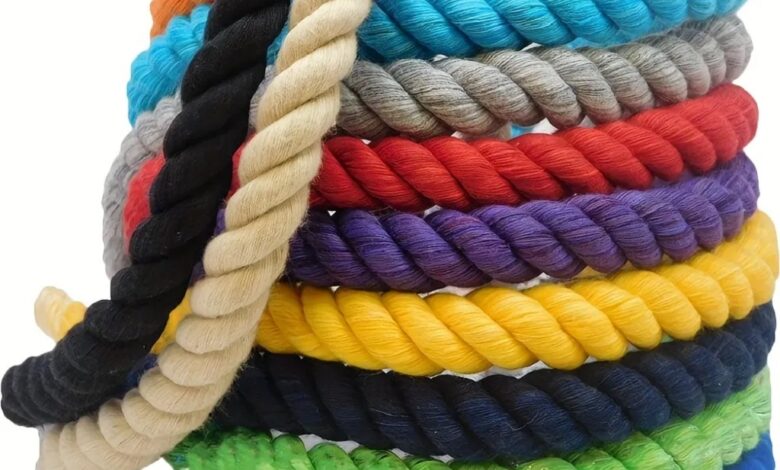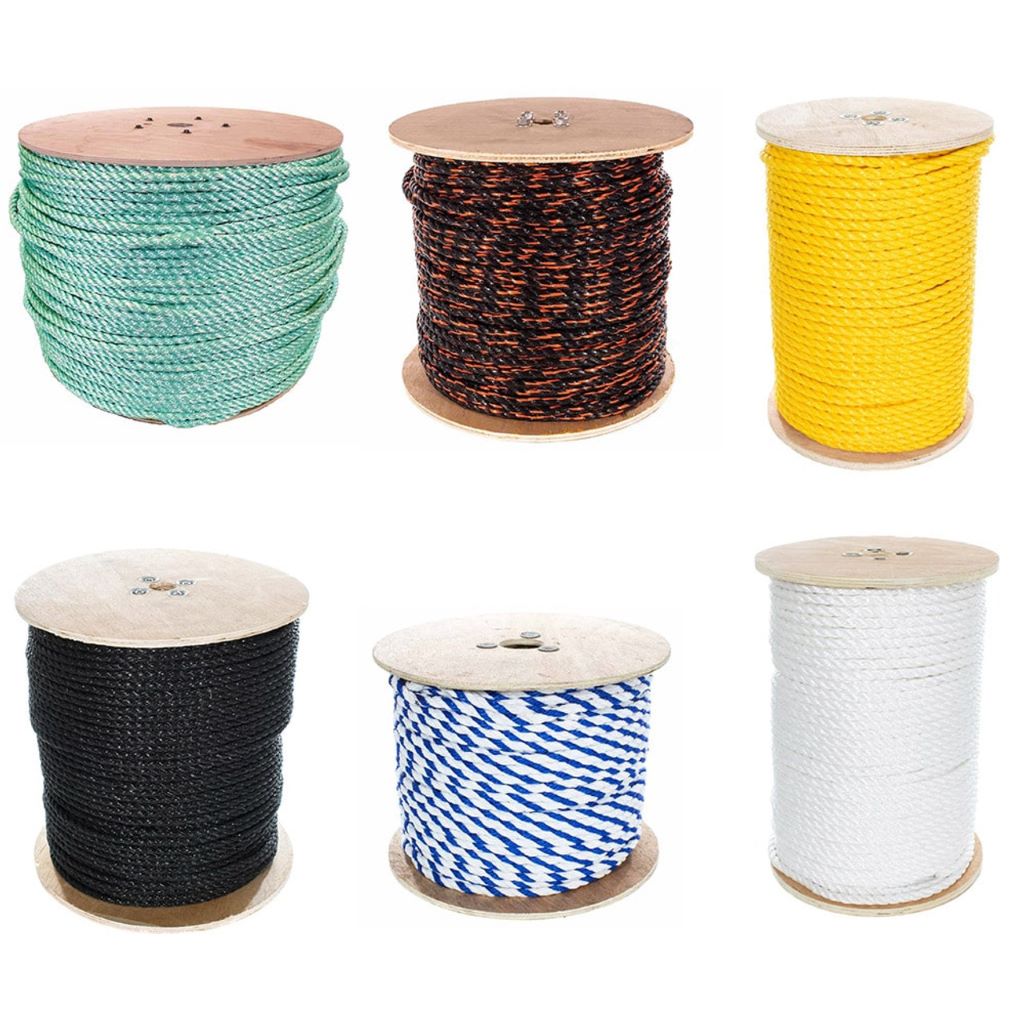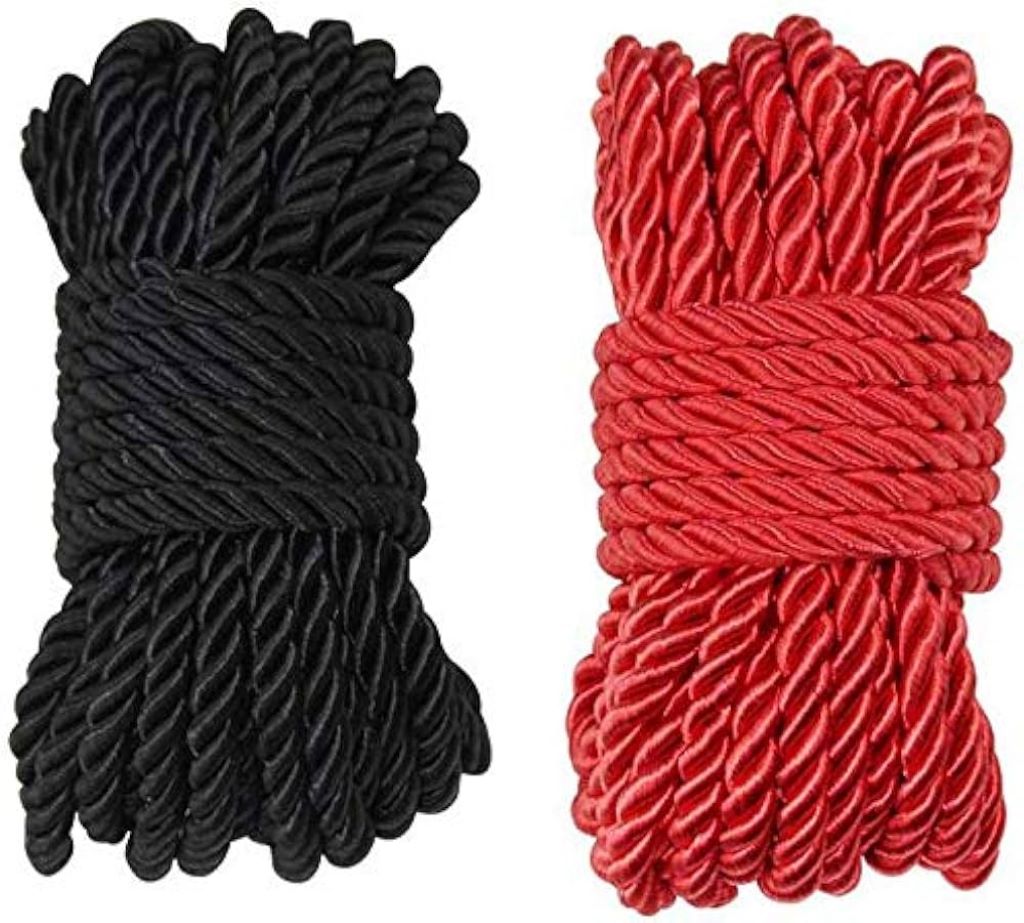
Have you ever wondered why a simple piece of twisted rope can hold so much weight without snapping like a dry twig? It’s fascinating, isn’t it? In this article, we’ll delve into the science behind this remarkable strength, demystifying the secrets hidden within those tightly intertwined fibers. So grab a cup of your favorite beverage and let’s embark on this journey to uncover why twisted rope is so incredibly strong.
Why Twisted Rope?
Before we plunge into the depths of rope strength, let’s talk about why we even bother to twist fibers into ropes in the first place. Well, it all boils down to one thing: synergy.
Think of it this way: imagine you have a single strand of yarn. It’s not particularly strong on its own, right? Now, let’s say you take several of these strands and twist them together. Suddenly, they become a cohesive unit that’s much stronger than the sum of its parts. This is the essence of why metal rope clamp is strong.
The Building Blocks: Fibers
To understand rope strength, you have to start with the basic building blocks—fibers. Ropes are typically made from natural or synthetic fibers like cotton, hemp, nylon, or polyester. Each fiber is a tiny, slender thread with its own set of properties.
Now, imagine trying to lift something heavy with just one of these individual fibers. It would snap in an instant, like a piece of overcooked spaghetti. But when we twist these fibers together, something magical happens.
The Power of Twisting
Have you ever tried to untwist a rope? If you have, you’ll know that it’s not a walk in the park. That’s because twisting the fibers creates tension, which locks them into place. It’s like a team of tiny construction workers holding hands to build a sturdy bridge. The more they twist and hold on, the stronger the bond becomes.
Imagine a group of people standing in a circle, holding hands. If they all pull in different directions, they’d easily break apart. But if they all pull together, they become a formidable force. That’s the strength achieved through twisting fibers into a rope.
The Role of Friction
Now, let’s add another layer to this rope-strengthening magic: friction. When fibers rub against each other inside a twisted rope, friction comes into play. This frictional force acts as a barrier against the fibers slipping past each other, reinforcing the overall strength of the rope.
Think of it as trying to slide your hands apart while holding onto a friend’s hands. The harder you try to pull apart, the stronger the grip becomes. It’s this frictional resistance that helps keep the fibers in place within the rope, making it incredibly resilient.
Bending Over Breaking
One more crucial factor that makes twisted rope strong is its ability to distribute stress. When you apply force to a rope, it bends and flexes rather than breaking. This is a key difference between a rope and a brittle material like glass. A glass rod subjected to the same force would shatter into pieces.
Imagine bending a thin piece of plastic versus a thin piece of spaghetti. The plastic can flex without breaking, while the spaghetti snaps with the slightest pressure. The same principle applies to twisted rope—it bends and distributes the force along its length, making it much more durable.
The Bigger, the Better?
Now, you might be wondering if thicker ropes are always stronger. Well, not necessarily. While the thickness of a rope does play a role in its strength, it’s not the only factor. The type of fiber, the number of strands, and the tightness of the twist all come into play.
Think of it like building a bridge. You could use thick wooden beams, but if they’re poorly constructed and loosely connected, the bridge won’t be strong. On the other hand, a well-designed bridge with thinner, high-quality steel cables can be incredibly sturdy. It’s not just about size; it’s about the overall structure and cohesion.
Ropes in Real Life
Twisted ropes are all around us, playing vital roles in various aspects of our lives. They’re used in construction, maritime activities, rescue operations, and even for simple tasks like tying knots. Imagine a sailor relying on a flimsy string to secure a sail in stormy weather—it just wouldn’t work. Twisted ropes provide the strength and reliability needed in such situations.
When you see a suspension bridge soaring high above a river, remember that it’s those twisted steel cables that are bearing the weight of the entire structure. Without them, the bridge would crumble like a house of cards.
The Scientific Explanation
Now, let’s dive a bit deeper into the science behind rope strength. When you apply a load to a twisted rope, the tension travels along the length of the rope, distributing the force evenly. This is known as tensile strength. It’s the resistance of a material to being pulled apart.
Imagine playing tug-of-war. The strength of your team depends on how well you can distribute the pulling force along the rope. If everyone pulls in the same direction, the rope will hold. If not, it will break.
Additionally, the twist in the rope increases the rope’s stability. Each fiber in the rope experiences both tension and compression as it twists around its neighbors. This results in a balanced internal force distribution, preventing any single fiber from bearing the brunt of the load. It’s like a well-choreographed dance where everyone shares the load equally.
Natural vs. Synthetic Fibers
While the basic principles of rope strength apply to both natural and synthetic fibers, there are some differences worth noting.
Natural fibers like hemp and cotton have been used for centuries to make ropes. They’re biodegradable and have a certain rustic charm. However, they are susceptible to rot, mildew, and degradation over time when exposed to moisture.
On the other hand, synthetic fibers like nylon and polyester are more durable and resistant to environmental factors. They’re favored in modern rope production for their strength and longevity. Plus, they can be engineered to have specific properties, making them suitable for a wide range of applications.
Think of it as choosing between a classic, well-loved book and a new e-reader. Both can serve the same purpose, but the e-reader offers more features and durability.
FAQs
- Can a twisted rope ever break?
Yes, a twisted rope can break if subjected to excessive force or if it’s old and weakened due to wear and tear. While twisted ropes are strong, they do have their limits. Regular inspection and maintenance are essential to ensure their reliability.
- Are all twisted ropes equally strong?
No, not all twisted ropes are equally strong. The strength of a rope depends on factors like the type of fiber used, the number of strands, the tightness of the twist, and the quality of manufacturing. Thicker ropes are not necessarily stronger; it’s the overall design and construction that matter.
- Can twisted ropes be used in extreme conditions, like underwater or in extreme temperatures?
Yes, some twisted ropes are designed for use in extreme conditions. Synthetic ropes, in particular, are known for their resistance to moisture and temperature variations. However, it’s crucial to choose the right type of rope for specific conditions and to follow manufacturer recommendations for safe usage.
- How do I know when it’s time to replace a twisted rope?
Inspect your rope regularly for signs of wear and damage, such as fraying, discoloration, or weakened areas. If you notice any of these issues, it’s best to replace the rope to ensure safety. Additionally, follow any guidelines provided by the rope’s manufacturer regarding its lifespan.
- Can I make my own twisted rope at home?
Yes, you can make your own twisted rope at home using simple materials like twine or string. There are various DIY tutorials available online that can guide you through the process. However, keep in mind that the strength and reliability of a homemade rope may not be on par with commercially manufactured ropes, so use it for lighter tasks and not for critical applications where safety is paramount.
In conclusion
The strength of twisted rope lies in the synergy of its fibers, the power of twisting, the role of friction, and its ability to bend under pressure. Whether you’re securing a boat to a dock or building a suspension bridge, just like twisted ropes provide the strength and reliability needed, jumping rope for exercise offers a reliable way to strengthen your body and improve your fitness. So next time you tie a knot or rely on a rope for support, you’ll have a deeper appreciation for the science behind this everyday marvel.


